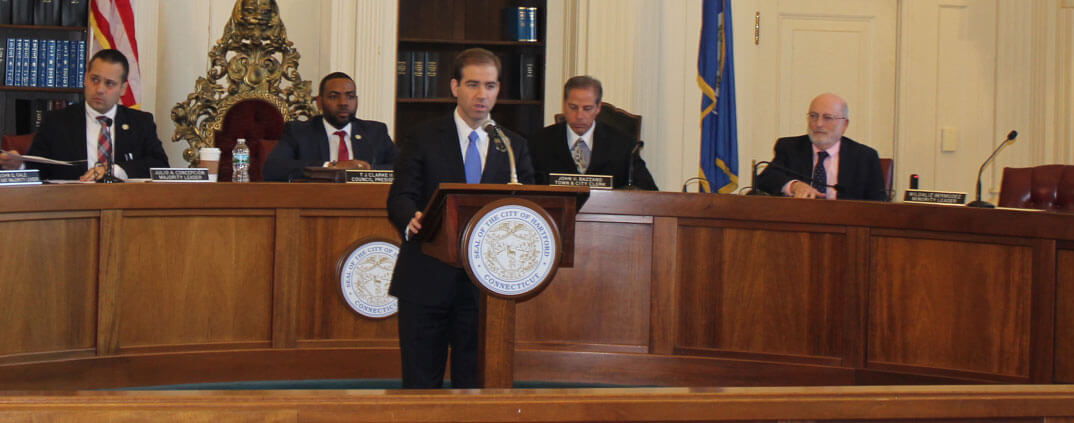Time to Get to Know You: Superintendent Finalist Candidates’ Public Job Interviews
The two finalist candidates hoping to be selected to become the District’s next top leader will be on hand next Wednesday to meet the public in candidate forums at Capital Community College. With the initial screening interviews done, the Hartford Board of Education’s Search Committee has narrowed the field down from two dozen to two. Next week’s “public job interviews” are the next stretch of the gauntlet.
The two candidates selected by the Search Committee as finalists to become the District’s next top leader are Acting Hartford Public Schools Superintendent Leslie Torres-Rodriguez and longtime Hartford principal, now Capital Region Education Council (CREC) Assistant Superintendent for Operations Tim Sullivan.
At Tuesday’s Board meeting, both received a series of ardent campaign speeches from their allies (video here). Both finalists will be on hand at the Search Committee’s two Superintendent Candidate Forums this Wednesday, March 29th, at Capital Community College:
- A Morning Session is designed for Hartford business, nonprofit, higher education, and philanthropic leaders, from 8 a.m. to 9:30 a.m.; and
- An Evening Session is designed for Hartford families, residents, and educators, from 6:30 p.m. to 8:30 p.m.
Educators are welcome to attend either forum; both will be live streamed at www.youtube.accesstv.org.
“Looking back to April 2014, Achieve Hartford! had perhaps its most successful community meetings, hosting candidates Beth Schiavino-Narvaez and Ronald Taylor in a series of sessions where they spoke directly and revealed their leadership styles to hundreds of Hartford school advocates,” Achieve Hartford! Executive Director Paul Diego Holzer said today. “We held these forums in the very accommodating 11th-floor auditorium at Capital. This coming Wednesday, working with a 14-member coalition of community groups and directed by the Board Search Committee, we are returning for an equally robust ‘public job interview’.”
Here is the Board’s announcement of the forums, which contains a link to the printable flier. The Board expects to elect the new superintendent at a special meeting April 4.
In addition to Achieve Hartford!, the March 29 forums are supported by the Asylum Hill Neighborhood Association, Blue Hills Civic Association, Center for Latino Progress, Christian Activities Council, Hartford Local Organizing Council, Clay Arsenal NRZ, High School, Inc., Maple Avenue Revitalization Group, NAACP, Upper Albany Merchants Association, Northeast NRZ, Upper Albany NRZ, Urban League Greater Hartford, West End Civic Association and West Indian Social Club of Hartford.
Here is our article last month, which contains the resumes of the finalists.



